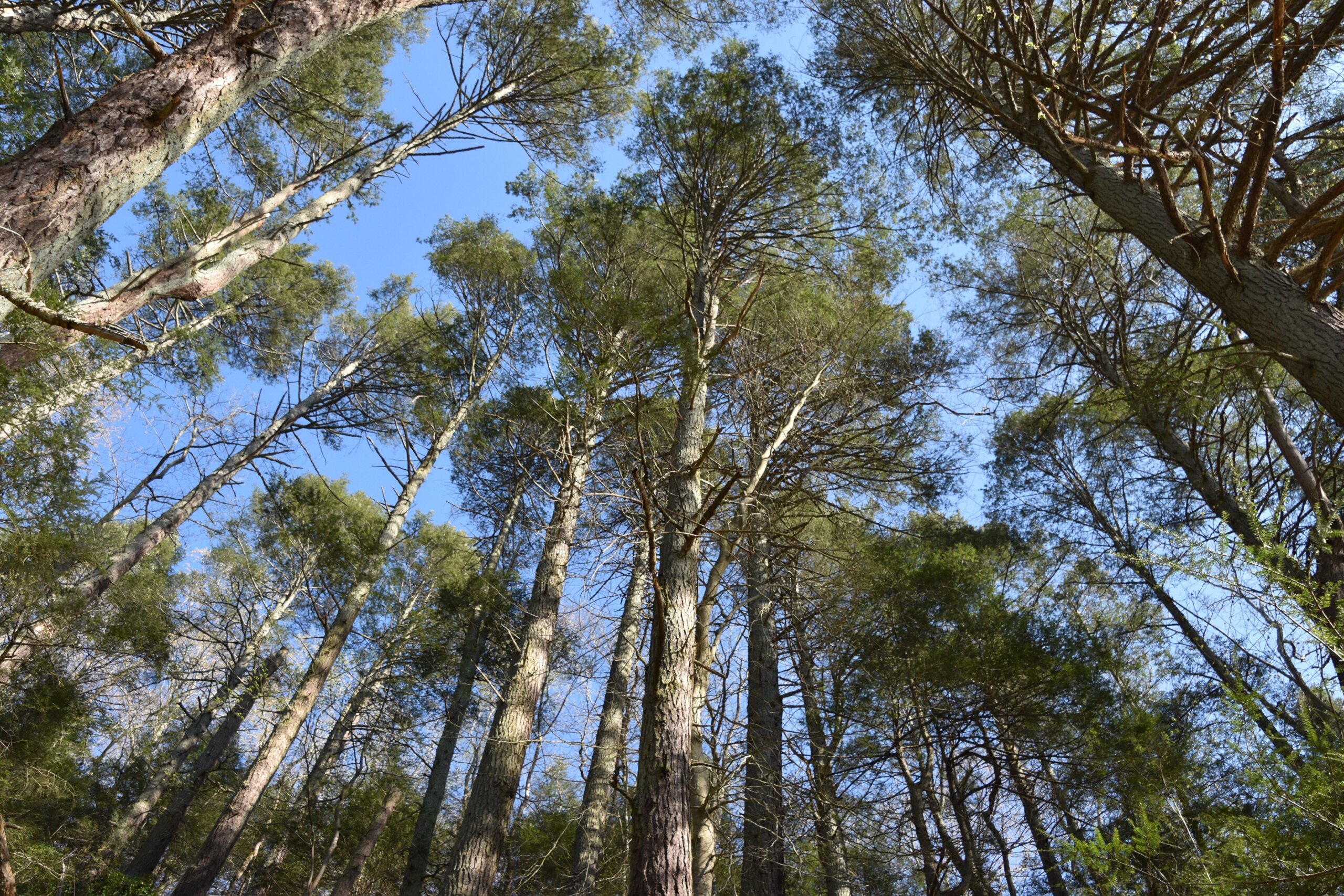
Friday is Arbor Day, which is the annual observance of the importance of planting trees. Hemlock Overlook Regional Park in Virginia offers a look at very tall, very old trees, which thrive in a hilly environment that has protected them for centuries.
“The hemlock tree is an evergreen tree that’s pointy up top — it’s a very slow-growing tree that can live up to 500 years,” said Paul Gilbert, executive director of NOVA Parks, the Northern Virginia Regional Park Authority.
The 400-acre Hemlock Overlook Regional Park, along the Bull Run Occoquan Stream in southern Fairfax County, is home to a network of pedestrian and equestrian trails.
“The trunks look substantial, but not giant,” said Gilbert.
“If you look up, these trees are very tall, very straight, the branches and needles are up high, where they can get sun. It’s like if you walked into a cathedral, with a super-high ceiling. It’s the feeling of openness,” he added.
But unlike forests that provide a lovely canopy, viewable from a leisurely stroll, hemlocks, including those in the regional overlook, thrive in a different environment.
“You don’t walk into this forest, it’s not flat, it’s very very steep, hilly terrain,” Gilbert said. “So, you actually have to almost climb into this forest, because it’s all at a 45% angle.”
Gilbert said NOVA Parks is very fortunate to have an area within the metropolitan area that hasn’t been logged or disturbed in hundreds of years.
“It would be very difficult to build anything here, or even to log those trees, because the terrain is so challenging,” he said. “This is the environments these hemlocks like, and it has protected these hemlocks for century.”
Hemlock Overlook Regional Park recently joined the Old-Growth Forest Network, which aims to preserve at least one forest in every county in the United States.
“It’s more than just the trees in an old-growth forest,” said Gilbert. “It’s the whole ecosystem of the forest. You wind up with more biodiversity in the soil, in the plants that are growing in the area, and the insect life — all of these things are much more abundant in this very old and stable ecological system.”
Unlike newer forests, which can contain dense underbrush, Gilbert said old-growth forests tend to include ferns, moss, with a bunch of space between the trees.
“Everything has sort of reached its equilibrium,” he said. “All of these species happily have the amount of room that they need.”








